can old single panes be made energy efficient w/o storms?
I am restoring a small building to become a wine shop. It is an 1890 cute thing, but between restoration and my long term plans, have a tight budget. My situation is the great 6 over 6 d/h original windows, that are in need of repair are, I would imagine,extremely inefficient. I am trying very hard to maintain the character, but at what cost. Can something be applied, besides storms-which seem like it would be intrusive)to increase the efficiency?
1 other thing. The building front also has huge display windows- 2@ 62 x 101 and another 2@ 26 x 101. Single pane warped beautiful windows. I imagine that is a huge energy sucker...Would love to keep them, but can't imagine how...
Any advise?
Thanks!
Comments (17)
oberon476
15 years agolast modified: 9 years agoCleaning, scraping, repainting, and adding the spring bronze weatherstrip will help to improve the energy performance of the double hung windows from what they are now.
Those front windows though are huge and you are right that they are not very energy friendly. In fact, they are very much energy unfriendly.
One of the very toughest decisions to make when renovating is what to do about the windows. Glass is a poor insulator and no matter how well you tighten up the window, it is what it is. Single pane windows can achieve a given level of energy performance that is not even close to the level of performance of the best windows available today, and those big windows have an awful lot of exposed glass area.
But with all that said, I am very much not suggesting that you change out your windows. Older windows have charm and are often architecturally significant to the home or building structure. As you said yourself, you would really like to save the original 1890 windows which is certainly not a bad idea by almost any measure (unfortunately, energy performance is one measure that is out-of-balance in this case).
This is a really tough question since those big windows are so very big with so much glass area...
Which way do the big windows face (N,S,E,W)? And where do you live? The orientation of the openings as well as your climate can make a difference in possible "fixes" for these windows and there are options that can be explored.
Related Professionals
Graham Window Contractors · Mount Kisco Window Contractors · Santa Cruz Window Contractors · Two Rivers Window Contractors · West Springfield Window Contractors · Wilmington Window Contractors · Scotts Valley Window Contractors · Watsonville Window Contractors · Middle Island Interior Designers & Decorators · Athens General Contractors · Aurora General Contractors · Coatesville General Contractors · Goldenrod General Contractors · Post Falls General Contractors · Birmingham Carpentersmcsbldr
15 years agolast modified: 9 years agoWe've had success retaining old windows and providing greater energy-efficiency by using storm windows. You mention "intrusive" when stating your dislike for storm windows. The use of the word "intrusive" might suggest your consideration of interior storm windows, and we would agree that they would be very intrusive on the interior side of a double hung window. Outside of incorporating storm windows into the older windows, your options may be limited.
Exterior mounted storm windows can be built/designed to fit older windows at a low cost when compared to new wood windows. The storm windows can provide excellent benefits, as noted below.
1. When designed properly, air infiltration can be minimized. Thus, energy performance is increased through the use of storm windows.
2. Protection is added to the original windows when exterior-mounted storm windows are installed, as the new storm window is mounted to the exterior-side or exposed area. The old window is then protected from the exterior elements.
3. New storm window glass can include a hard-coat low-E product that will provide additional energy performance.
A costly option is to remove the existing glass and route a deeper glass "pocket" in the old sashes. This allows the old windows to accept insulating glass with all the modern technological benefits in regards to energy efficiency. We have never attempted this modification. Since you are dealing with glass divisions within the double hung sashes, this may be very impractical due to budget constraints, or may even be impossible. The structural integrity of the wooden glass divisions would be greatly compromised, particularly with the introduction of heavier glass panes.
fasola-shapenote
15 years agolast modified: 9 years agoThe short answer to your original question - can single-pane windows be made energy-efficient without the use of storm windows? - is: "no". HOWEVER, realize that they can't be made energy efficient WITH them, either. There is no such thing as an energy efficient window -- any window is a big leaking hole in the wall.
As an example, take Marvin's wood window series - a window with regular old clear single-pane glass has an R-value of about 1.67 - the same size window with double-pane Low-E II glass w/ argon has an R-value of about 3.63. By comparison, even the worst walls (2x4 construction with fiberglass batt insulation) have an R-value of about 20. The point is this: you could shell out a ton of money on fancy new windows with double-pane glass and Low-E coatings and argon fill gas and all that jazz...while completely ruining the charming historically-accurate look of the antique-glass single-pane windows...and the effect on the R-value (energy efficiency) of your wall would be very small. No window comes anywhere close to matching the R-value of a wall, and to that end they're all about the same. Even with the current very-high heating prices (assuming you live somewhere cold), there is just no way that the new windows could pay for themselves in energy savings...especially with the added costs of installation.
Storm windows would net you the same energy efficiency as the double-pane+Low-E+Argon windows, at less cost. However, they're even uglier (in my opinion).
If it were my house, I'd just keep the old windows and leave them as is. But I'm honest in my devotion to complete historical accuracy.
There is another option -- although the cost is entirely prohibitive to you, based on what you said about your budget -- and this option would be to have new custom double-pane insulated windows constructed with reproduction wavy antique glass (such as Bendheim's "Restoration Glass" - www.restorationglass.com). Vintage glass is that way because of the manufacturing processes used in the days of yore -- which, unlike the molten-tin-flow process used today, were incapable of producing a totally flat piece of glass; Bendheim crafts truly accurate reproduction glass by simply using the old manufacturing procedures. I've used their Light Restoration glass before, to replace broken panes in the single-pane windows in my 1938 home here in North Carolina - and it's excellent; you positively cannot tell any difference between it and the genuinely old glass.
When it comes to the heating and cooling costs of a building, windows don't make a significant impact (with the exception of clerestory windows). If you have 2x6 or better exterior walls packed with wet-sprayed cellulose insulation, and your attic has 24"-deep loose-fill cellulose insulation, and the building sits on an insulated crawlspace foundation (as opposed to a concrete slab or - worse - a dirt floor), your costs will be 75%-85% lower than a traditional pre-WWII American home, and that's WITH you having single-pane windows. The worst heat losses in any home are through the ceiling.
oberon476
15 years agolast modified: 9 years agoCommenting...
"...a window with regular old clear single-pane glass has an R-value of about 1.67..."
A single lite of 1/8" glass has an R-value of slightly less than 1. Many folks simply round the R-value of single glass to 1 for convenience, but not the 1.67 that you stated.
"...even the worst walls (2x4 construction with fiberglass batt insulation) have an R-value of about 20..."
Fiberglass batt at 3-1/2" has an R-value of 13. However, add studs at 16" on center and per ASHRAE the total R-value of a 2x4 wall drops by approximately 18% to R 10.7. Add siding, sheathing, and interior wall covering and you may reach an R12 to R13 depending on materials used, but not an R20.
"No window comes anywhere close to matching the R-value of a wall..."
Well, there are new windows on the market that have R-values in the 8 to 10 range which I would suggest is fairly close to the value of the 2x4 wall with fiberglass batts that you mentioned earlier.
"...and the effect on the R-value (energy efficiency) of your wall would be very small."
Define "very small"?
To keep it simple, imagine a single 100sqft wall 2x4 stud wall in a home with fiberglass batt insulation and an R-value of 12 not including any windows or doors - yet.
Add a 10sqft window with an R-value of 3.63 (from your post). Convert the R3.63 to U factor of .275 (U = 1/R) for energy performance computations.
Wall = R12 or U.083
Window = U.275
Window = 10% of wall
Wall = 90sqft, window = 10 sqft, overall 100 sqft
Wall = 90 sqft x U.083 = 7.5
Window = 10 sqft x U.275 = 2.75
7.5 + 2.75 = 10.25/100sqft = U.1025 or overall wall R value of 9.75.Now if we consider a single pane window with an R1.67 which is too high, but we will use it for this illustration. U-factor of that window is .6.
Wall = R12 or U.083
Window = U.275
Window = 10% of wall
Wall = 90sqft, window = 10 sqft, overall 100 sqft
Wall = 90 sqft x U.083 = 7.5
Window = 10 sqft x U.6 = 6
7.5 + 6 = 13.5/100sqft = U.135 or overall wall R value of 7.4Using the percentage change formula = (x-y)/y*100 = Z%, and the numbers from the computations - (9.75-7.5)/7.5*100 = 30%.
So, while the comparison of window to window energy performance numbers results in an R-value increase that a little better than doubles using the numbers that you posted (which is significant in itself); by increasing the energy efficiency of the window from R1.67 to R3.63 the overall wall efficiency in the example will be improved by 30% - simply by using the more efficient window.
Picture an entire home. I would probably not consider that to be "very small".
"Storm windows would net you the same energy efficiency as the double-pane+Low-E+Argon windowsÂ"
Not unless the storms are also double pane + LowE + argon, they wonÂt.
A clear glass dual pane IG window will have the same center-of-glass R-value as a single pane with storm. But, add the bells and whistles and the window with LowE and argon will significantly outperform the single pane and storm.
"Bendheim crafts truly accurate reproduction glass by simply using the old manufacturing procedures."
Actually, Bendheim doesnÂt "craft" raw glass. While Bendheim does do some in-house fabrication, they are primarily a glass importer. Restoration and vintage glass comes primarily from Germany where it is manufactured using the same techniques that were used in days past.
"When it comes to the heating and cooling costs of a building, windows don't make a significant impactÂ"
You really need to get that data to the Department of Energy as soon as possible since their energy policies certainly donÂt take your information into account.
In fact, in cooling dominated climates there are studies showing 35% (or better) overall home energy performance improvement when comparing clear glass dual pane to IGÂs including solar-blocking LowE coatings and argon.
In heating dominated climates the improvements tend to be a bit more modest; but improvements of 30% (or better) have been documented.
Again, these numbers are from real homes in real conditions and are not laboratory or computer simulations and these are whole-house, total energy usage numbers, not simply comparing windows to windows.
fasola-shapenote
15 years agolast modified: 9 years agoYou couldn't be more misguided and confused.
To be able to be specific, I dug up the actual numbers on the various window efficiencies. For a regular old-fashioned single-pane glass window, the R-value is 1.20. For the same size window with double-pane Low-E glass w/ argon fill, the value is 3.23. Refer to the chart on page 3 of http://www.marvin.com/download.aspx?DocumentID=784
The single-pane windows cost you nothing, because you already own them. The double-pane + Low-E + argon windows are insanely expensive, to the tune of hundreds or even thousands of dollars PER UNIT.
And yes, the rich ivory-tower liberal college laboratories have turned out some experiemental new triple-pane windows with an R-value of approx 8. These are not available nationwide, and are prohibitively expensive to most of the population (especially given that there is no American middle-class any more, and no one can get a loan). Not to mention, they cut out 50% of the light, and look terribly out-of-place on an antique barn/shed/whatever it was the OP said he has.
Again, that's hundreds/thousands of $$$ PER WINDOW UNIT (most buildings have more than one window), and that doesn't include the cost of installation. Show me a realistic calculation by which the energy savings will pay that back in the remaining lifetime of the presumably-middle-aged OP.
And as far as R-value goes...the lowest-quality wall brings the following to the table:
* 4" cavity insulation = R-13
* 1/2" interior drywall = R-2
* 1/2" exterior sheathing = R-3
* Wood or foam-backed-vinyl siding = R-1.5That's an R-value of 19.5, which I rounded to 20 in my original statement. You can try to weasel around with the numbers all you want; the POINT is this -- no window, much less a window available and affordable to the average American, has an R-value anywhere near that of a wall. And that's a bad wall. A good wall (2x6 framing, cellulose insulation, perhaps even 1"-thick foam exterior sheathing, etc.) has an even higher R-value, making the window even crappier in comparison. ANY window is a big leaking hole in the wall. The marketing departments of the multi-billion-dollar window industry love taking thousands of dollars from people by selling them windows with all this jazzed-up crap like "Low-E II" and "argon fill" - when, in reality, the windows rarely if ever pay themselves back in the buyer's lifetime. I don't trust them any more than I trust car dealers or other salesmen, and neither should you unless you enjoy being parted from your presumably-hard-earned money.
Call me nuts, but I believe that if I will LOSE money by making a change, I shouldn't make that change. If my expensive new double-pane/Low-E/argon windows won't pay for themselves in my lifetime, I'm going to keep my old single-pane windows thank you very much.
Don't you know my truck has a single-pane windsheild and windows too, and it's never bothered me there either.
The government's statistics show that, when ranked, heat loss through windows is NOT the chief heat loss method in a regular home. I never said there wasn't any. The point is that everything else -- wall thickness and insulation, above-ceiling insulation, beneath-floor insulation, doors, weatherstripping, etc. -- these things add up to much more than the windows. You can have the most expensive, fancy, energy-efficient windows on the market...but if there's no insulation above the ceiling, you will bake in the summer and freeze in the winter. By contrast, if you live in a well-insulated house with single-pane windows (like I do), your heating and cooling bills are low. Heat rises...above the level of the windows, up to the ceiling. Put 24" of cellulose insulation above your ceiling...that's a LOT cheaper than new windows, and saves more than 3x the heating/cooling costs.
In the end, you realize that there is no justification for the new windows. The hundreds/thousands per-unit cost is NOT paid back in energy savings during the lifetime of the buyer. And that's even with the current exorbitant energy prices. You liberals who think that Messiah Obama is going to get elected and fix the world and gas and electricity and oil will cost what it did 15 years ago...you shouldn't be worried at all about keeping your single-pane windows, since prices will surely be falling as soon as Messiah gets into the Black House.
oberon476
15 years agolast modified: 9 years agoLiberals? Messiah? Black house?
Sometimes a post simply isn't worth reponding to.
oakhill3
15 years agolast modified: 9 years agoI understand your dilemna. After throughly researching, then deciding against, replacement windows for my 1835 brick Federal house because 1. original windows should NOT be removed from an old structure if it can be avoided in any way (no matter what contractors who are not restoration experts may tell you) and 2. the cost was not justifiable for the energy savings gained. Sure, I could have gotten cheapy replacements, and they would have LOOKED completely inappropriate. Even many of the expensive replacements we viewed would not have looked right, either. So I started researching and looking at storm windows. They cost MUCH less than replacement windows, but I was running into aesthetic issues with them, too, plus having a tough time finding one that would not interfere with my plans to put the shutters back up in a functioning fashion. Marvin Windows makes a wooden storm for historic buildings, but I found them to be rather expensive, too thick, plus the bottom sash portion was much too wide to look right on my house, not to mention my husband was quite opposed to having to maintain them constantly. Also, the meeting rail was way to wide to look right - I have 6 over 9 windows with a very narrow check rail. . . I want my windows to be protected and more energy efficient, but I don't want them to be visually obliterated by whatever storm I put on, either. I considered interior storms, but then that exposes the old sash to the elements constantly, and there is the risk of condensation buildup on the sash during the winter months, which I also did not want. At present I am looking at custom exterior storms made by Allied Window, a company based in Ohio (you can Google them), but they do have dealers around the country. I am located in Southeast PA, and there is a dealer outside Philadelphia who used to specialized in historic restorations. Allied has an almost invisible storm window (it's only 3/8" thick), can accomodate any size or shape window, and can be made in any color you want. I am in the process of awaiting a ballpark cost quote before making the final decision, but so far, they are the only ones I have found that don't significantly detract from the exterior appearance of old structures. I will let you know how they pan out cost-wise.
happycthulhu
15 years agolast modified: 9 years agoWOW fasola......anger management issues much?
Although I agree with you about not replacing perfectly good original windows, maybe you should tone down the raciest hate comments a bit.
joomatt
15 years agolast modified: 9 years agoI would like to get both left and right input on our energy issue. :-)
We live in a post and beam 50s ranch house in so cal (no attic, a A LOT of floor to ceiling singel pane windows/doors, celerastory windows in 3 rooms, and walls are not insulated). It is a beautiful house to look at and to live in, but in the summer, the inside of the house gest to 90 and in the winter, it does get REALLY cold. Our roof is relatively new (5 years), so ripping that out and insulating w/ a foam at this point is not an option and looking at insulating the house. We've come up w/ the folloiwng options and I would like your opinion on what would be the most benefitial for us to do first:
1) Insulate the walls (we have about 60:40 wall/window ratio). Fortunatley, we can insulate from outside as we have batten/board siding without opening up the wall inside.
2) Insulate the roof by using insulating roof paint (using ceramic bead paint additive such as http://www.hytechceramics.com/roofpaint.html). The vendor also recommended painting the ceiling as well
3) Insulate the single pane glass by attaching window film (such as Gila Heat Control Platinum Film - I read that it has "some" U-value)What do you experts think about these options on helping us live more comfortably? Thanks in advance.
oberon476
15 years agolast modified: 9 years agojoomatt,
If you can swing it, I would first contact an energy-rater about getting a whole house energy audit.
It will cost you a few bucks, but the auditor will be able to show you exactly where you are losing energy dollars and will be able to help you decide what your best approach would be to tightening up your home.
Ultimately, the audit might even end up saving you money over "guessing" where to invest in upgrades.
artifactsmail_yahoo_com
15 years agolast modified: 9 years agoHow did a discussion about windows turn into a cultural disagreement and charged political discussion? Left, right or wrong, please save the personal attacks.
That said...I have an old (circa 1840s Greek Revival home with 6 over 6 double hung windows. Unfortunately, I had to replace them because they were in just too bad of a shape to restore economically. The closest I found in an affordable stock size and style was Brasco Boston 6 over 6 ADL (authentic divided light) windows (sash replacement kit--sash and balances only, no frame). A local mill was able to make custom wooden storms to match an original storm I found in the barn when I purchased the house. The windows cost a little over $100 each, the storms about $85.00. With a little ingenuity, I was able to make the Brascos fit into the original openings (the size difference was only about a 1/2 inch or so). From the outside, the house looks the same as it did in the photos I found at the local hisrorical society. The only drawback is the balances, which are vinyl with a spring mechanism. I was able to hide those with some creative interior trim work that doesn't look out of place. The net result is my heating bill has dropped significantly and my home is a lot less drafty.
In the back turn of the 20th century addition that I had to completely rebuild due to structural issues, I bought pricey (stock) Marvin low E with argon 6 over 6 SDL's (simulated divided light windows--(prices ranging from $500 for a single unit to $1,100 for a mulled unit). The muntons are about an 1/8th of an inch thicker than the Brascos which matched the originals, but not noticeable since they are consistent on that portion of the house.
Net net...The Marvins look great, operate smoothly (thanks to the quality balances) and are tight and completely draft free, but expensive. The Brascos look very close to the originals and with the storms seem to be as efficient.
If I were in the position of the original poster, I would probably get removable interior storms and only put them in during the coldest months. The good ones don't look too bad and are a lot less expensive than replacing the windows. And my guess is the energy savings would pay back the cost within a few years or so. Perhaps Oberon can do the cost recovery calculation for you.
brickeyee
15 years agolast modified: 9 years agoInfiltration (air leakage) is a bigger factor than even single pane glass.
Bronze weather strip can be somewhat effective, but there are better type available.
Try Resource Conservation Technology, Baltimore, MD.
They have 'flipper seals' that go in a small (3/32) groove cut into the edge of the sash.
Seals for the meeting rails (were the upper and lower double hung windows overlap) are also available.Storms can be made that are not as intrusive as aluminum triple tracks.
Plenty of older places had separate wooden storm sashes once large sections of glass became available.
If you want to further minimize the appearance of storm sashes you can use minimal wood on the edges (1.5 in wide, or even 1 inch) so they do not intrude past the wooden of the window.
Putting some felt seals on the face against the window frame will further limit air movement.joe_mn
13 years agolast modified: 9 years agoi used to workout at gym that was in converted grocery store. they had 8ftx12ft windows in a row, tempered glass? about 30-40ft wide if i recall. after several yrs, owners decided to stud out wall and sheetrock over windows. went from light filled room to darkness. glass on outside but painted walls on inside. like working out in cave. this was 20+ yrs ago. club is still there. as are windows.
gswier_cablespeed_com
13 years agolast modified: 9 years agoOld single pane, or even new triple pane, can be made more energy efficient w/o storms. There is a see-through radiant barrier window insulator that also acts as an air seal. I think the url is www.inflectorpanel.net.
David Harmon
6 years agoanotherwizzard
As the R value of light frame wall construction was used to establish a bench mark comparison to energy loss through glass, it should be noted that the R 20 value was grossly overstated. Guarded hotbox studies of energy flow through wall construction prove that the average light frame construction yields an R value of approximately 5.5, which is not much better than a good quality double pane glazing. Fasole-shapenate added all of the quoted values to obtain R 19.5 but omitted the fact that 15% of the wall is wood which has an R value of .8/inch or 2.8 for a 2 x 4 wall (.8 x 3.5"). In other words, its a short circuit. Also, note that when Owens Corning invented fiberglass wall insulation, they established a system of R values based on the first inch of insulation, which includes a paper liner. The liner is the source of a good part of the R value, therefore, when multiplying by the first inch value, the overall value is overstated.
Obviously, the amount of wood in any given wall area varies according to it's use but the R 5.5 will keep you out of trouble when doing air conditioning loads.And the R 20 value is a fairy tale.

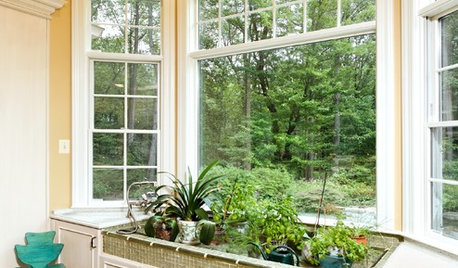
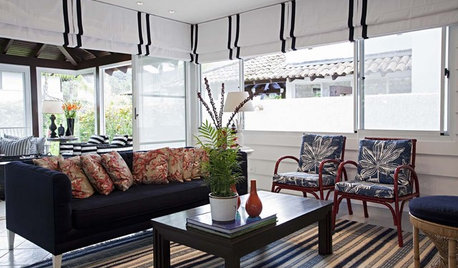
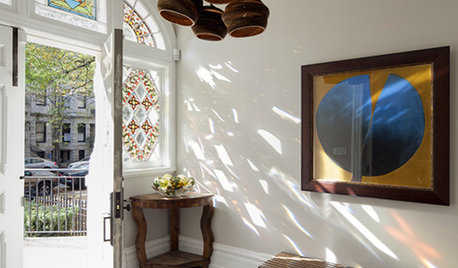

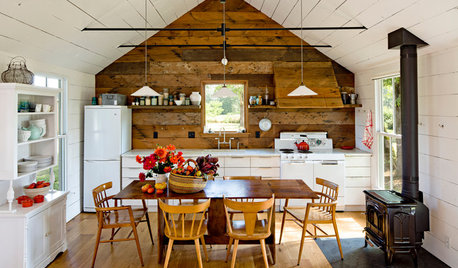
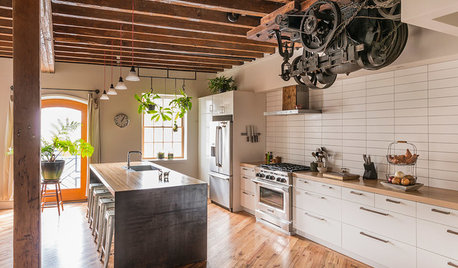









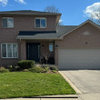
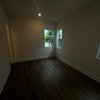
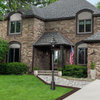

User